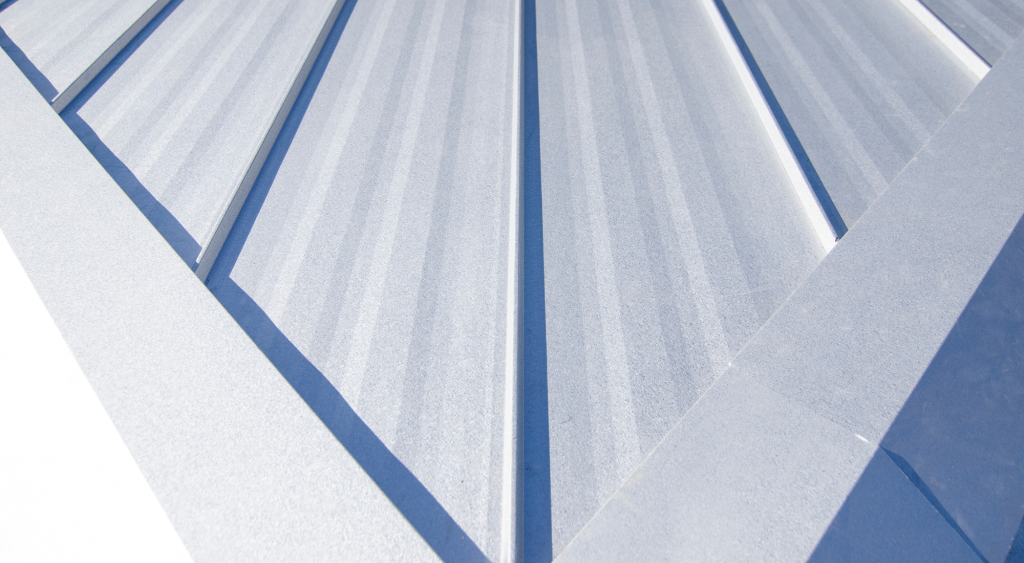You’ve reached the point where you can’t put off replacing your roof any longer. The signs of wear and tear are becoming more evident, and you know it’s time to take action. As you delve into the world of roofing options, one name keeps coming up — TPO roofs.
A roof is a significant investment, and you want to make sure your choice fits your needs. TPO roofs are known for their durability and energy efficiency making it a compelling choice for many homeowners like yourself. But before you make this investment, it’s crucial to weigh the pros and cons.
In this article, we’ll discuss exactly what is a TPO roof and unravel its advantages and disadvantages. By addressing common questions, we will help you make an informed roofing decision for your home.
Table of Contents
- What Is a TPO Roof?
- What Is TPO Roofing Made Of?
- TPO Roofing vs. Other Common Types of Roofing
- Potential Pros and Cons of TPO Roofing
- FAQs About TPO Roofing
- Think TPO Roofing May Be Right for Your Project? Get a Free Estimate With Oscar Roofing
What Is a TPO Roof?
TPO roofing, short for thermoplastic polypropylene, emerges as a great choice in both commercial and residential roofing projects. Unlike traditional roofing materials, TPO is a single-ply membrane offering a sleek, white surface. This unique feature allows it to reflect heat rather than absorb it, contributing to improved energy efficiency.
What Is TPO Roofing Made Of?
A TPO roof is comprised of three layers:
- Base layer: thermoplastic polypropylene
- Middle layer: polyester (scrim)
- Top layer: thermoplastic polypropylene
Have you ever heard of thermoplastic polypropylene? Well, neither have most people!
Polypropylene is a chemical compound found in everything from plastic containers to car parts. It’s known for its elasticity and durability, which are pretty important traits for roofs.
Thermoplastic polypropylene also contains ethylene-propylene rubber. This rubber substance adds flexibility, elasticity, and weather resistance.
TPO is manufactured in sheets and is available in several sizes.
TPO Roofing vs. Other Common Types of Roofing
Among the many choices of roofing materials available, TPO stands out to be a versatile and reliable option for both residential and commercial properties. However, it’s important to compare it to other types of popular roofing materials before making a choice.
Let’s explore the differences between TPO roofing and other popular choices:
- Metal roofs: TPO roofs are more cost-effective, require less maintenance, and provide better insulation. However, metal roofs are very durable and can withstand more extreme weather conditions than TPO roofing.
- Asphalt shingle roofs: Offering greater resistance to weather events, TPO roofs typically are more durable than asphalt shingle roofs. In addition, TPO roofs’ reflective properties contribute to better energy efficiency compared to shingle roofs. However, asphalt shingles may offer better insulation in colder climates.
- EPDM roofs: Ethylene propylene diene monomer (EPDM) roofs are another type of membrane roof. While EPDM roofs can be more cost-effective, TPO tends to offer better resistance to weather and sunlight exposure which ultimately translates to a longer lifespan.
Potential Pros and Cons of TPO Roofing
What Are the Advantages of TPO Roofing?
TPO roofs offer numerous benefits that make it an attractive option for homeowners:
- Durability: TPO’s durable material makes it resistant to tears, punctures, and weathering. Because of this durability, the lifespan can go up to 25 years with proper installation and maintenance.
- Energy efficiency: The reflective white material helps reduce heat absorption. This translates to a lower energy bill during hot weather. However, TPO roofs come in other colors and still maintain good UV resistance.
- Cost-efficiency: TPO roofs are often more affordable, both in terms of initial installation costs and long-term maintenance expenses. The lightweight material makes labor costs lower.
- Eco-friendly: TPO roofing is made from recyclable materials, which means it can also be recycled at the end of its lifespan. TPO roofs are also considered a “Cool Roof” by the EPA, meaning that it contributes to efforts to conserve energy and also mitigate the heat island effect.
What Are the Disadvantages of TPO Roofing?
While TPO roofs offer many advantages, it’s important to consider their drawbacks before making a decision. While these disadvantages shouldn’t deter you from necessarily getting a TPO roof, it’s important to be aware of them.
Here are some potential disadvantages:
- Seams in membranes: TPO materials are manufactured in rolls that are typically six to eight feet in length. Therefore, seams are often present and can become an area of vulnerability. Some manufacturers offer larger sheets up to 16 feet in length, which can reduce the number of seams.
- Leaks: While TPO roofs are very durable, leaks may develop over time. Most commonly leaks on TPO roofs are caused by punctures, which can be repaired if the damage is minor. The seams also pose an area that is more susceptible to leaks.
- Professional installation: While DIY projects can be tempting, attempting to install a TPO roof is not the best idea. Leave this project up to the professionals. Our team at Oscar Roofing has the skills and expertise to ensure proper installation.
FAQs About TPO Roofing
How Is TPO Roofing Installed?
Installing a TPO roof involves several important steps to ensure a durable and watertight finish. Here’s an overview of the installation process:
- Prepping the roof: A key step in the installation process begins by prepping the existing roof and removing existing materials and debris. Depending on the previous roof type, sometimes roof material can stay in place if it’s not damaged. However, the surface must be completely dry before laying the TPO material to prevent mold growth.
- Laying TPO material: The TPO sheets are rolled out over the roof surface. It’s important to ensure proper alignment.
- Securing the TPO material: The TPO membrane is then securely fastened onto the roof’s cover board using tools, adhesives, or mechanical fasteners.
- Sealing the seams: As discussed previously, seams can be potential areas of vulnerability so it’s critical to ensure that the seals are watertight when installed. The seams of the TPO material are heated and fused using a hot air gun or hot air welder. This process creates a seamless bond between the membrane sheets preventing water infiltration. In addition to the seals between the TPO sheets, you will also have seals that must be sealed around the vent edges.
How Is TPO Roofing Repaired?
Like any roofing system, TPO roofs can require repairs to address issues such as failures in the seams, punctures, or water infiltration. Here’s an overview of the repair process for TPO roofs:
- Identify signs of damage: The first step of repair is recognizing there is a problem. Usually, this begins with leaking which is your roof’s way of telling you that it needs some TLC.
- Call a professional: While it’s never fun to spend money on home repairs, when it comes to your roof you want to make sure you hire a professional that will get the job done right. That’s where Oscar Roofing comes in — the top-rated roof installation in Bloomington and Indianapolis contractor. Our experienced team knows how to fix TPO roofs correctly and will provide prompt and reliable service to protect your investment and give you peace of mind.
- Inspect the roof: The professional roofer will assess the extent of the damage and locate where the water is penetrating the membrane. They will assess the extent of moisture in the insulation, examine the seams, and provide an overall evaluation of the condition of the TPO roof, taking into account the roof’s age.
- Repair the damage: This could involve resealing the seams, patching punctures, or replacing sections of the TPO membrane to restore the roof’s integrity and prevent future problems.
- Preventative maintenance: We all want to avoid future issues. Regular maintenance is crucial. With regular roof inspections, you can prolong the lifespan of your TPO roof and minimize the need for more costly repairs.
How Long Will a TPO Roof Last?
A TPO roof can last around 25 years when installed correctly. Factors such as weather conditions, sunlight exposure, and installation quality influence its lifespan. Regular inspections, like those offered by Oscar Roofing, can help maximize its longevity and protect your investment.
The local climate and weather conditions can influence your roof’s lifespan, such as:
- Extreme or fluctuating temperatures
- Heavy rainstorms or snow
- Frequent hailstorms
- High winds
These weather conditions can impact the wear and tear of the roof and potentially shorten its lifespan. Regions with milder conditions may see TPO roofs last longer than 25 years.
Sunlight can also impact the roof’s durability. While TPO roofs are known for their great reflective properties, prolonged UV radiation can cause the TPO membrane to degrade over time. Proper installation techniques can help mitigate this issue.
How Much Does TPO Roofing Cost?
While roofs are a big investment, it is comforting to know that roofs have excellent return on investment and are the top for exterior projects according to the National Association of Realtors.
The cost of TPO roofs can vary depending on several factors including:
- Type of insulation: Different levels of insulation thickness and material quality can influence the overall cost.
- Size of the roof: The size of the roof impacts both labor time and materials. While smaller roofs require less materials, larger commercial projects may benefit from lower costs due to economies of scale.
- Complexity of the project: Factors such as accessibility challenges, the need for more extensive prep work, and the roof’s shape could impact the overall cost and time for installation.
Is TPO Roofing Best for Residential or Commercial Roofs?
TPO roofs are a versatile option that can be used for both residential and commercial roof projects. They are well-suited for flat or low-slope roofs commonly found in both houses and commercial buildings.
Its durability, energy efficiency, and cost-effectiveness make it a popular choice for many building types from single-family homes to large warehouses. Oscar Roofing has the expertise and experience to deliver high-quality residential and commercial roofs.
Think TPO Roofing May Be Right for Your Project? Get a Free Estimate With Oscar Roofing
TPO roofs are becoming a more popular choice for residential and commercial projects. If you’re exploring TPO roofs for your property, you can trust the experts at Oscar Roofing.
With over 20 years of experience, we’re your trusted experts in roofing solutions. We’re committed to delivering the highest quality and reliable service at affordable prices.
When you choose Oscar Roofing, you’re not just getting a roofing contractor — you’re gaining a trusted partner who will guide you through the process. If you’re curious about what is TPO roofing and its advantages, we will not only educate you, but help you decide if a TPO roof is the best solution for your needs. We offer a range of roofing options from TPO roofs to asphalt shingles, so your options are endless!
Trust Oscar Roofing for all your roofing needs, and experience the difference that quality, reliability, and exceptional service can make. Contact us today to schedule your free estimate and discover why we’re the go-to choice for roofing in Indianapolis, Bloomington, and beyond.





